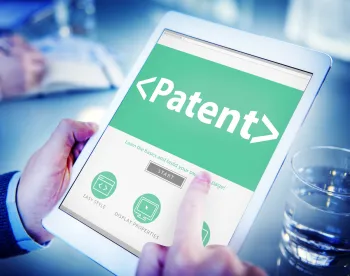In Personalized Media Communications, LLC v. Apple, Inc., the Federal Circuit left intact Judge Rodney Gilstrap’s ruling of unenforceability based on prosecution laches and deprived Personalized Media Communications, LLC — a nonpracticing entity — of a paycheck from Apple. At a high level, PMC appealed a final judgment of the U.S. District Court for the Eastern District of Texas that U.S. Patent No. 8,191,091 (the ʼ091 patent) is unenforceable based on prosecution laches. Unfortunately for PMC, the panel took no issue with Judge Gilstrap’s determination that PMC engaged in an inequitable scheme to extend its patent rights and affirmed his ruling with respect to the unenforceability of the ʼ091 patent. As a result, Apple was relieved of having to pay PMC over $308 million.
While many will raise a toast to such an entity losing out on its damages award and quickly move on regardless of the reason, the financial investment, planning, and patience that must have been required by PMC is nonetheless intriguing and worth exploring. So, I invite you to join me in a story of a long con otherwise known as submarine patenting, or prosecution laches.
The Back Story
Before we dive into PMC’s conduct, we should spend a little time gaining an understanding of GATT and reviewing the Hyatt case since both play rather large roles in the district court’s ruling and appellate court’s affirmation. The Uruguay Round of the General Agreement on Tariff and Trade (GATT) provided a 17-year term from the date of issuance for any patent applications filed prior to June 8, 1995. Applications filed after June 8, 1995, are given a 20-year term from the date of the application from which the patent claims priority. Since patent term for pre-June 8, 1995, applications were calculated from the date of issuance rather than the date of filing, certain patentees were incentivized to delay issuance by abandoning applications and filing continuing applications in their place to obtain patents at a more financially desirable or advantageous time (such as until the market developed). As such, GATT also prompted a slew of application filings leading up to June 8, 1995, known as the GATT-Bubble.
In Hyatt v. Hirshfield, the Federal Circuit explained prosecution laches may render a patent unenforceable where a patentee’s conduct constitutes an egregious misuse of the statutory patent system and set forth the two required elements:
-
the patentee’s delay in prosecution must be unreasonable and inexcusable under the totality of circumstances; and
-
the accused infringer must have suffered prejudice attributable to the delay.
Gilbert Hyatt was a major player in the GATT-Bubble: He filed almost 400 continuation applications right before the change. While other applicants did the same, Hyatt’s applications were already quite long in the tooth, i.e., the applications claimed priority back to filings from the 1970s and 1980s. In addition, the applications at issue in the Hyatt case were all lengthy and complex with hundreds of pages of text, over 60 pages of drawings, and an average of almost 400 claims per application. Moreover, many claims were added 10-20 years after their alleged priority dates. After the USPTO finally rejected claims in four of Hyatt’s applications, Hyatt sued under 35 U.S.C. § 145 in an effort to have a court order the USPTO to issue patents based on those applications. The district court ruled that prosecution laches did not bar issuance of those patents and the USPTO failed to take the actions necessary to advance the prosecution of Hyatt’s applications. The court then ordered the USPTO to issue patents for the rejected claims. On appeal, the Federal Circuit found that the district court misapplied the legal standard for prosecution laches and explained that the doctrine is available to the PTO as a defense in a § 145 action.
A few months before the Federal Circuit vacated and remanded Hyatt, PMC won its sizable jury verdict for Apple’s infringement of PMC’s patents relating to digital rights management with its FairPlay technology, which is used to distribute encrypted content through iTunes, the App Store, and Apple Music. Following the verdict, but shortly after the Hyatt opinion was issued, the district court held a bench trial on the issue of prosecution laches and unenforceability. In finding that Apple met its burden on the first element of prosecution laches, the district court discussed a plethora of similarities between PMC’s conduct and Hyatt’s conduct. For example:
-
Hyatt had filed 381 GATT-Bubble applications; PMC had filed 382 GATT-Bubble applications;
-
Hyatt’s applications were identical to one of 11 earlier patent applications, and all of PMC’s applications derived from two earlier applications;
-
Like Hyatt, PMC’s applications “were ‘atypically long and complex,’ containing over 500 pages of text and over 22 pages of figures;”
-
PMC “filed each of its applications with a single claim, then subsequently amended the claims, sometimes to recite identical language across different applications;”
-
Like in Hyatt, PMC greatly increased the total number of claims in the range of 6,000 to 20,000 claims; and
-
Like Hyatt, PMC had significant delays in the prosecution, and “waited eight to fourteen years to file its patent applications and at least sixteen years to present the asserted claims for examination.”
In fact, the only significant difference between Hyatt and PMC is that Hyatt did not have a plan for distinguishing his applications, whereas PMC came to an agreement with the USPTO as to grouping of its numerous applications. The court found that the agreement between PMC and the USPTO did not shift the blame for the delay to the USPTO and explained that all of these factors made it “virtually impossible for the PTO to conduct double patenting, priority, or written description analyses.” In addition, the lower court found that documents from PMC’s production suggested a deliberate effort at creating submarine patents (i.e., to emerge into developed markets after “technology becomes so deeply embedded in commercial products that design around is not an option to infringers”).
With respect to prejudice, the lower court noted that PMC’s delay contributed to the prejudice to Apple. In particular, the ʼ091 patent issued nine years after Apple had begun developing its FairPlay technology and seven years after that technology matured into the accused product. Finding both elements of prosecution laches met, the district court thus held the ʼ091 patent unenforceable.
The Unsuccessful Appeal
PMC appealed the lower court’s decision and tried to argue that its conduct “looks nothing like Hyatt.” The majority of the Federal Circuit panel disagreed, affirmed the lower court, and accused PMC of “expressly adopting and implementing dilatory prosecution strategies, specifically to ambush companies like Apple.” While Judge Stark agreed with the district court concerning PMC’s unreasonable delay, he explained in a lengthy dissenting opinion that he would have held that Apple failed to satisfy the legal standard for intervening rights and, thus, did not establish prejudice.
The Takeaways
This fact pattern could be aptly described as a “long con,” i.e., an elaborate confidence game that develops in several stages over an extended period of time wherein the con man or swindler gains the victim’s trust, often bypassing small profits with the goal of reaping a much larger payout in the final maneuver. Given the reliance on long-dead rules regarding patent term, it is unlikely to recur again. In fact, like any seasoned con artist that makes money through deception, PMC took advantage of a loophole that allowed for an indefinite application process with the possibility of still being awarded a patent with a 17-year term. In this aspect, PMC filed hundreds of applications in the 1980s and 1990s, almost 400 of which were filed during the GATT-Bubble. Yet not a single patent was awarded to PMC until 2010. And at no point in the decades between when the patents were originally filed and granted did PMC actually attempt to use or commercialize the ideas. Indeed, PMC’s strategy was to merely lie in wait until the technology became widespread. While this involved impressive financial investment, planning, and patience by PMC, the gig appears to be up and procedurally gaming the system to the extent that PMC did is not something that we will likely see again.
That said, while filing continuation applications and amending claims during prosecution are generally acceptable under U.S. patent law, prosecution laches could still be an issue if there is an unreasonable and unexplained delay. Thus, it is important for an applicant (and counsel) to not only comply with statutory requirements and USPTO regulations, but also prosecute applications in a manner that steers clear of unreasonable, unexplained delays that could arguably prejudice others.




 />i
/>i

